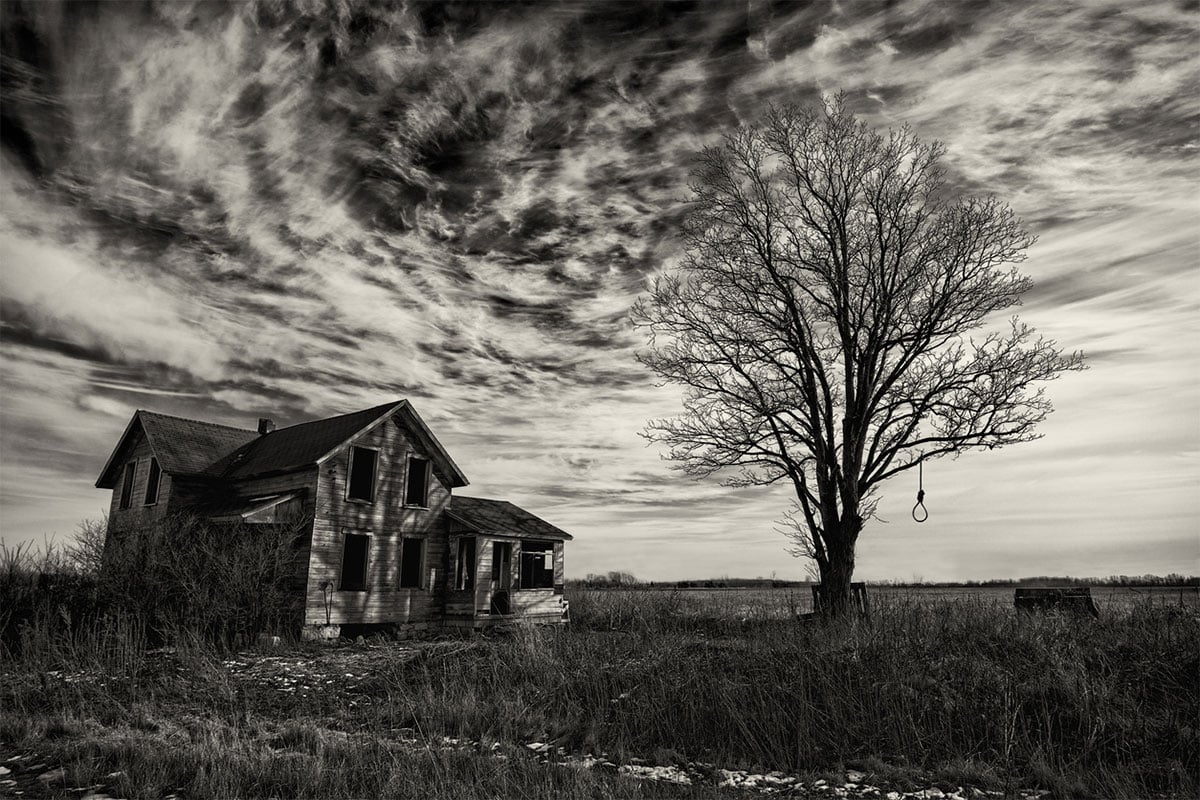
I read once, in an archive originating from 19th century England, that the only good man is a dead man swinging.
As gruesome as it is, I'd harbor a guess that up until the 20th century, most people would have felt similarly.
For centuries, hangings were a public spectacle sport. It was a form of entertainment for the masses–what wasn't fun about watching necks snap and bodies bob under the duress of gravity?–and a form of manipulative control on the government's behalf. In many cities, like New Orleans, these public executions were carried out on Sundays just after Mass. Churchgoers would descend the front steps of St Louis Cathedral, pass the petty criminals locked up in stocks, and enter the Plaza de Armas to stake their spots around the gallows.
Criminals were led up short wooden steps. A black cloth was sometimes downed over their heads. After being positioned appropriately, the executioner slid the noose around the criminal's neck before the deadly deed was committed. Cheers and jeering rose up from the crowd, as the next ill-fated criminal was treated to the same ministrations. Up the steps. Tightened, braided noose. Off the proverbial ledge until permanent blackness descended.
It was not an elegant death and, in fact, sometimes hangings went a little wrong . . . But for the most part? The gallows were the government's calling card. A, If you do this, you too will end up with a rope around your neck and your feet kicking nothing but air.
For the most part, it seemed to work. Mostly.
Hangings were prevalent in every society leading up to the turn of the 20th century, but perhaps no where else like in San Antonio, Texas.
And that my friends, is where the legends begin.
I should star this with a disclaimer: I'm not from San Antonio. Until two months ago, I had never even visited the city of the Alamo and wild west saloons. But there's a second disclaimer: I'm a historian.
Which means that when researching San Antonio's Spanish Governor's Palace, I found account after account claiming that the old captain's presidio (homestead/military fortification) once held a "hanging tree" in the courtyard. It had earned the nickname of "The Tree of Sorrows," thanks to the fact that no less than thirty-five souls were hanged there during the 17th and 18th centuries.
Sources claimed that if one peered carefully enough, the nicks and cuts from the hanging ropes could still be seen in the tree's reaching limbs. Today, almost all of the alleged hauntings at the Spanish Governor's Palace encompass the courtyard in some way. There was a little girl who fell into the courtyard's well, and another who'd been left in charge by the captain's family to watch the house's goods. When burglars stole inside, their greedy hands snatching whatever gold and silver they found, they stumbled across the servant girl. Fearing that they would be caught, they dragged her body to the well and threw her in.
The spirits of these two girls are said to still haunt the presidio's courtyard, sometimes sitting on the edge of the well or reenacting the final moments of their life.
And the ghosts of the hanged criminals? Said to do much of the same, as though their crimes were so great, so horrific, that they have become destined to repeat the scene of their death over and over again until infinity. Thirty-five souls were strung up and released to fall, and thirty-five souls possibly haunt the Spanish Governor's Palace. It's almost hauntingly poetic, really.
Account after account I searched, and I found these stories repeated time and time again–some were more elaborately spun, the creator perhaps being a little more imaginative, while others were as scientifically written as though mimicking a lab report.
The thing is? No where did I stumble across a historian, or another academically accredited source, talking about this "Tree of Sorrows" at San Antonio's Spanish Governor's Palace. The only groups to repeat the story of thirty-five criminals being hanged at the tree came from tour companies–ghostly ones, primarily at that.
Even as warning bells signaled off, I placed them aside. After all, I'd been a tour guide in New Orleans post history-grad school. I did my own research, had even written a few tour scripts for Ghost City Tours and its sister company Discover Historic America. I was credible, I told myself.
So I believed what was said about The Hanging Tree.
The Spanish Governor's Palace was on my definite list of places to visit while in San Antonio with my coworkers. I made it on the second morning with co-worker and resident Voodoo Priest, Michael Bill, in tow. We were both intrigued by the prospect of a Hanging Tree still standing from the 18th century.
Plus, the Spanish Governor's Palace was a rediscovered historic treasure. Built in the 1740s, it remained either a military fortification or home for the Spanish Captain until the 1860s, in which it went through a rough period for the next sixty years. It was a barber shop, a pawn shop, a saloon, a grocery, and a host of other businesses.
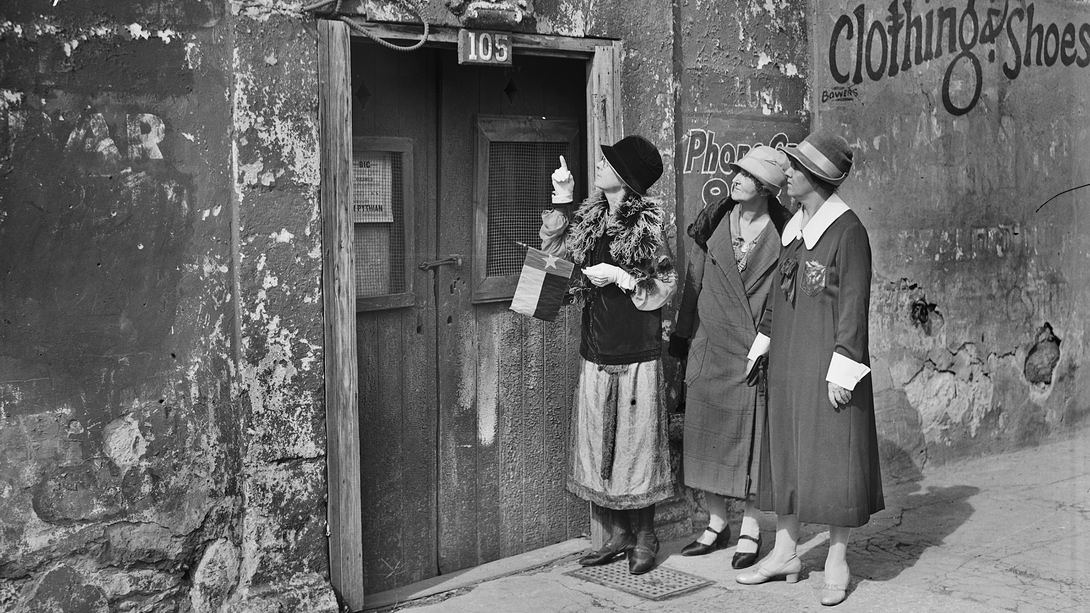
By the 1920s, the 18th century building–the oldest Spanish Colonial-style home in San Antonio–faced inevitable demolishment. Run down and defeated, the old presidio's only signifying feature was the coat of arms above the front door. It was pioneer preservationist Adina De Zavala who one day stepped before the front and recognized the words año 1749 se acabo, and realized the gem she had discovered.
The 1930s saw the presidio given a new name thanks to Zavala–even though the building had never been home to a governor–and, I'd have to guess, perhaps some of the buildings' other stories, as well.
The Hanging Tree story, included.
Michael Bill and I handed our money over to the front desk attendant, thankful beyond anything to be out of the hellish heat. Thanks to the adobe workmanship and the tiled floors (and the one or two fans positioned throughout the now-museum), the so-called palace remained cool. We wound our way from one room to another, pointing out an antique writing desk in one room or the fact that the windows' shutters were held open with large, round rocks.
By the time we entered the courtyard, I was digging through my bag for my camera, eager to at last get a look at the Tree of Sorrows. But then I glanced up, as did Michael Bill, and we quickly realized one thing: there did not seem to be a single tree that stood out among the rest.
Even more importantly, none of the trees looked older than a century–and that was pushing it.
We tromped from one side of the courtyard to the other, passing the haunted well in the process, enticing wooden benches that begged for us to rest our tired feet. We covered every inch of the outdoor space and came away with the fact that there was no tree around that could even potentially be labeled as "The Hanging Tree."
While I could have chalked the instance up to the possibility of the tree having been cut down over the years, I simply couldn't shake the fact that this was pure legend. No historians had referenced the tree in the Spanish Governor's Palace; only tour companies. Only ghost tour companies, including the one that Michael Bill and I took while in town because I am incapable of not going on ghost tours in each new city I visit.
Even when I work for a ghost tour company–not even then.
Entering the presidio, I paused by the front desk on our way out. "Excuse me, ma'am," I ventured. "Have you heard of the story of The Hanging Tree?"
The woman laughed, which sent her blonde bob quivering around her face. "Pure legend–did you go one one of those ghost tours and hear that story?"
I didn't say anything, and my silence must have been answer enough, for the attendant went on: "I honestly can't tell y'all why they tell that story here. There never was a Hanging Tree here–wouldn't make sense for the Captain to be executing people in his private residence, courtyard or not."
"So they just made it all up?" I asked somewhat incredulously, because quite honestly, my inner historian was disgusted. It was one thing to claim the events as pure make-believe, nothing but legend passed down through generations, and another thing entirely to pass it off as fact. (I say this, as though I don't know countless of tour guides in New Orleans who do the same thing, but my disgust is not immune to them either).
The blonde bob shifted to the side as the woman tilted her head. "Not completely," she murmured. "Nothing like that ever happened here, but if you're keen on knowing where they actually hanged people, you only have to walk on the other side of that building. That oak tree isn't there anymore, but there's a historical marker which marks the spot."
We thanked her for her time and commenced with the search.
The historical plaque was less than two-hundred feet away, smack dab in front of the city's 19th century City Hall. It read:
"The presidio (fort) of Bexar was relocated here in 1722 and for many years, plaza was enclosed on three sides by adobe fortifications. During Mexican Rebellion of 1813, captured rebels were placed in comandancia (now old Governor's Palace) and later executed on plaza. Many lynchings also occurred at a great oak here."
There was more, but this paragraph in particular was the key to unfolding the mystery of the nicknamed "Tree of Sorrows." Sure, the criminals may have been tried at the Spanish Governor's Plaza, but that was not where they met their inevitable death.
Those destined for death were instead brought to the great oak tree, located in the center of what is called Military Plaza, and thereafter executed. Moreover, it's unclear if these proceedings would have been publicly watched–if there were three great walls enclosing the fort off, it seems somewhat unlikely.
As the time progressed, however, the military importance of the Military Plaza declined, especially during the Republic of Texas Era (1836-45). By that time, the plaza had ceased to be a place of capitol punishment and instead blossomed into the liveliest area in all of San Antonio.
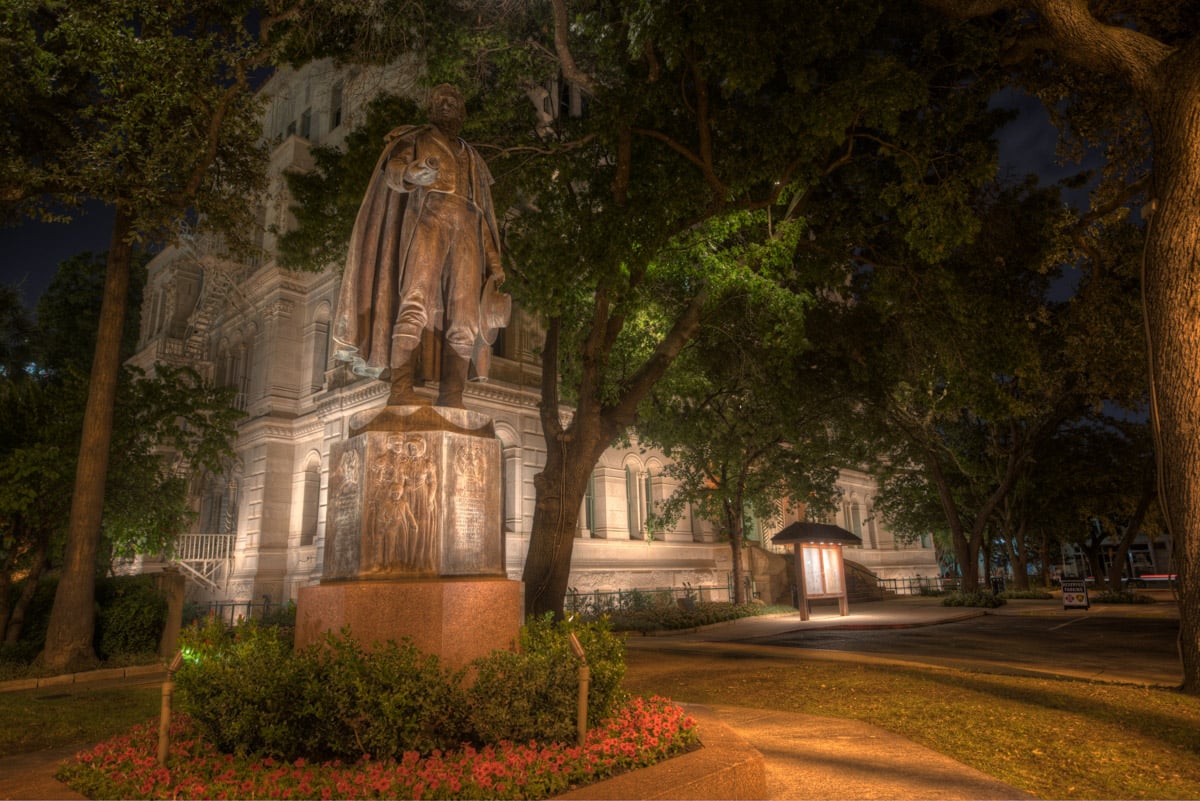
There were open-air markets, with women who soon earned the nickname "the Chili Queens." (It's up for debate on whether their food would have been that spicy or not).
By the 1850s, a courthouse had been erected opposite the presidio and most government matters shifted there. It also earned itself the nickname, the "Bat Cave," thanks to the fact that many bats made themselves at home within its rafters. Executions like hangings were then moved to just outside of the jail, and the Bat Cave remained the city's most "popular" jail until space ran out and another jail was constructed in the late 1800s.
The hangings continued, and continued to continue until 1921 when the last one in Texas was held at the then-new Old Bexar County Jail just a block away from the Spanish Governor's Palace on Cameron Street.
Today, the present city hall (dated to around the 1890s) is no longer a military center, but remains the municipal heart of San Antonio.
And as for the true Tree of Sorrows? Where it once existed on the green space that now belongs to San Antonio's City Hall, it no longer exists, having been cut down decades before.
But this does leave the questions: Why create the story of a haunted Hanging Tree at the Spanish Governor's Palace? Why "thirty-five souls" and not "fifty" or "a hundred?" Why pass off the stories as fact, when the true Hanging Tree once stood less than a block away?
I don't have these answers for you, unfortunately, though I wish I did.
The 19th century City Hall also has claims to ghosts and roaming spirits, making it a prime candidate for ghost tours to stop on by and regale guests with the stories of criminals who had met their untimely end and have yet to cross over to the Other Side.
While I can't explain the actions or decisions of others, I can say that Ghost City Tours always remains true to the historical fact. After all, the ghosts are just the catalyst to the history–and we are simply their storytellers so that like the Spanish Governor's Palace, the stories of our haunted cities do not disappear forever and become something that they never were.
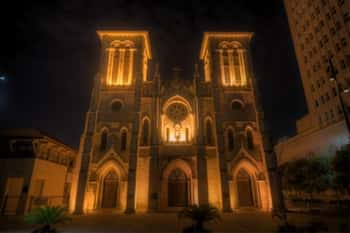
San Antonio's most haunted Church
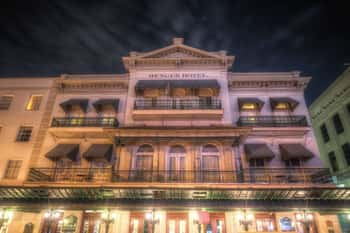
San Antonio's most haunted Hotel
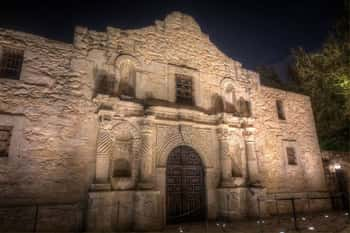
San Antonio's most famous haunted landmark